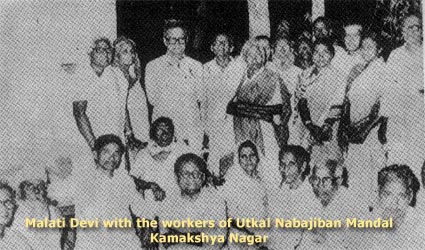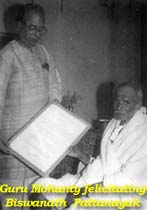Tribal Service Work In Orissa
|
Govt. Of Orissa Activities Report 2004-05 The concern for tribals amongst enlightened non-tribals in India grew concurrently with the rise of freedom movement under Mahatma Gandhi. Indulal Yajnik followed by Amritlal Vithal Thakkar (popularly known as Thakkar Bapa), both social reformer and freedom fighters, began for the first time working amongst tribals, particularly amongst Bhils of Gujrat. It was around 1920s. ‘ Bhil Seva Mandal’ was founded in the year 1926 to spread education, prohibition amongst the Bhils and imparted training to them so that some of them could take charge of different activities of Mandal. The centres set up under its auspices were known as ‘Sevashrama’ (the hermitage for service). Thakkar Bapa also took interest in tribals of Orissa at the instance of Mahatma Gandhi. In 1939, Shri Laxmi Narayan Sahoo, a life member of Servants’ of India Society, undertook the study on the tribals of Koraput district of Orissa. Orissa became a separate province on first April 1936. In the year 1938-39, the Government opened a tribal welfare section under its development department. But nothing significant could be undertaken till 1947-48.
But outside of the Government, the effort towards tribal welfare is stated to have begun as early as 1937, when under the auspices of the Koraput district Congress, a camp comprising 450 tribal and non-tribal youths was organised. Veteran freedom fighter and Gandhite Gopabandhu Chaudhury inaugurated it. In 1939-40, in Kujendri, a remote tribal village in Gunupur subdivision of Koraput district, Biswanath Pattanayak, then a twenty-five year old youth, set up a centre devoted to the tribal welfare. Biswanath Pattanayak was a staunch follower of Gopabandhu Chaudhury. This centre at Kujendri is stated to be the first centre to have been set up in Orissa devoted to tribal welfare. The freedom fighters and Gadhians led by Gopabandhu Chaudhury, however, felt the necessity of a Central organisation outside the control of the Government which could train people to undertake welfare work amongst the tribals throughout the length and breadth of Orissa. Such thinking led to the establishment of the Utkal Nabajeevan Mandal, on 24th October 1948. This is stated to be the first non- government institution devoted to the welfare of tribals. Its headquarter was decided to be at Baji Rout Chhatrabas, Angul in the then district of Dhenkanal. Baji Rout Chhatrabas was founded by Nabakrushna Chaudhury and Malati Devi on 11th May 1946 with the singular purpose of educating the children of those who were fighting against the oppression by the feudal rulers of the princely states and imperialist British government. Nabakrushna Chaudhury and Malati Devi who were beholden to the educational environment of Shantiniketan as its inmates, dreamt to create similar environment in Baji Rout Chhtrabas. Shantinikatan was founded by Nobel Laureate poet Rabindranath Tagore in 1901 as a novel experiment in education, and became a centre of attraction for the scholars and students from all over the world. The first Prsident and Secretary of the Utkal Nabajeevan Mandal were respectively Sarangdhar Das and Gopabandhu Chaudhuri. The members were Acharya Harihar, Pandit Krupasindhu Hota, Smt. Rama Devi, Nabakrushna Chaudhury, Smt. Malati devi, Shri Iswarlal Vyas, Biswanath Pattanayak, Upendra Mohapatra and Bharat Charan Mohanty.
Notwithstanding such dedication and commitment of the workers of the Utkal Nabajeevan Mandal, the decline in the government’s financial assistance and fall in the interest rate on the bank deposit are threatening its continuance. In the present times when threat to the life and livelihood of the tribals has been on increase under the preying eyes of the rich and simultaneously attempts are afoot to divide the tribals on communal line, it is unfortunate that the continuance of institutions like the Utkal Nabajeevan Mandal is under threat. Any body who thinks in the interest of the tribals and comes to know about the selfless service the activists of Utkal Nabajeevan Mandal have rendered in the last 47 years of its existence can not but wish its continuance. Needless to say, it can be only possible if all the right thinking concerned citizens contribute their mite to strengthen this hoary institution. |
Photographs :Kasturi Mruga Sama by Manmohan Chaudhury; Numa- A compilation; Smaranika, published by Utkal Navajeevan Mandal; Shradhanjali, published by Bastia Memorial Trust; Adwitiya, published by Nabakrushna Chaudhury Centenary Committee; Ajnanku Abhinandan, published by Banabasi seva Samiti, Baliguda; Ajna by Subhas Chandra Mishra; Pathikrit published by Lohia Academy Trust
Illustrations :
References :





